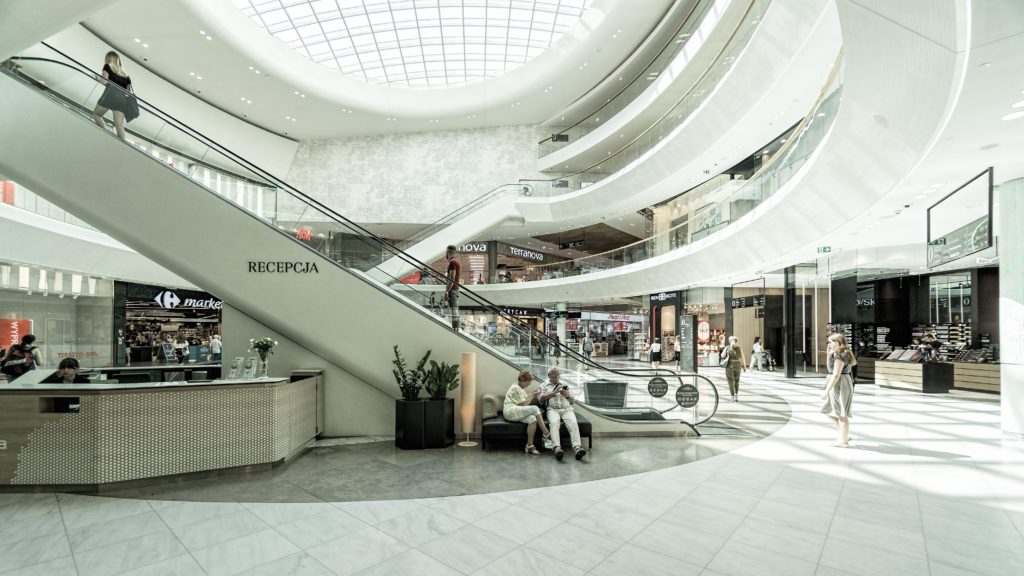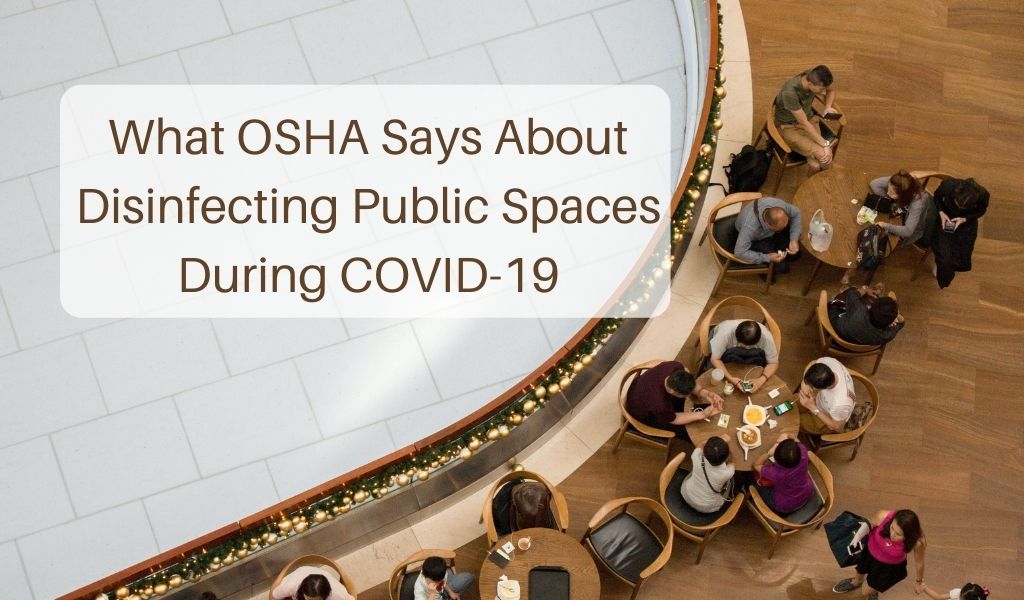Disinfecting public spaces has been top of mind since the pandemic began. Here’s what public health officials have to say.
Since the onset of the coronavirus pandemic in 2020, people have become much more health-conscious, especially as it relates to their interactions outside of their homes. It’s hard to imagine this changing any time in the near future, regardless of whether or not we’re facing a new virus. For these reasons, people want to know what protective measures are in place. Are there regulations, for example, about disinfecting public spaces? And if not, how will people know they’re safe?
Fortunately, there is guidance about disinfecting public spaces, which remains a primary concerns as people slowly venture back into the world. Both the Occupational Safety and Health Administration (OSHA) and the Centers for Disease Control and Prevention (CDC) have released guidelines intended to help keep public spaces safe for people to occupy and enjoy with minimized risk of contracting COVID-19.
While neither agency has a specific standard that people are required to follow, the guidance they offer should generally be undertaken, especially by employers and janitorial workers responsible for disinfecting public spaces. Here’s some of what they have to say on the issue.
Keep track of your inventory with ease using Janitorial Manager. Learn more about this and the other unique features by signing up for a free demo today!

OSHA and CDC guidelines for staying safe in public areas
Develop a plan
Because OSHA only handles workplace safety issues, they generally defer to the CDC’s guidance on disinfecting public spaces. The first thing that the CDC recommends is to develop a plan of action by determining what needs to be cleaned. Outdoor areas, for example, don’t need to be cleaned as frequently as indoor areas since there’s increased ventilation and since the novel coronavirus doesn’t live for very long on surfaces or outside of a host. Indoor areas like post offices, schools, gyms, and other high-traffic areas are a different story unless they’ve been unoccupied for more than seven days. These areas require special attention.
But disinfecting public spaces won’t look the same everywhere. The CDC says that the plan should then include a decision about how to disinfect, or rather, which products to use. There is an EPA-approved list of cleaning solutions that are effective against the virus that causes COVID-19, and only these should be used. Which chemicals you choose depends a lot on your business and your client’s needs, but as long as they’re on this list, you should be good to go.
Finally, count the cost before getting started. Understand the resources you’ll need and stock up on them before disinfecting public spaces.
Implement the plan
Now that you’ve got your plan in place, it’s time to put it into action. The CDC and OSHA agree that all surfaces should be cleaned before they’re disinfected, even if they don’t look dirty. This helps ensure that potentially infectious particles are removed so that disinfecting will be most effective. Again, when it comes time to disinfect, be sure to use the EPA-approved disinfectants, or else you may not protect the space against the coronavirus.
While your team is cleaning, they need to properly don appropriate personal protective equipment (PPE), including masks and disposable gloves. Workers should wash their hands regularly for at least 20 seconds with warm water and soap to help prevent the spread, and it’s recommended that they keep their hands away from their faces until they’ve had a chance to wash them.
How to prepare for disinfecting public spaces
We’ve mentioned cleaning before disinfecting, but what does that mean? In short, it means to get dirt, grime, and particles off of surfaces that may already be contaminated. High-touch surfaces like elevator buttons, public computer stations, and ATMs need extra attention and more frequent cleaning than other areas when possible. Preparing for disinfection this way maximizes the effectiveness of the disinfectant and offers the most reassurance that public spaces are as clean as they can be.
Disinfect properly
As most cleaning professionals know, disinfecting public spaces isn’t as simple as spraying and wiping. There are certain specifications for properly disinfecting any surface or area, especially in public.
First, the disinfecting chemicals need to remain on the surface for longer than a few seconds (sometimes as many as 20 or 30 seconds) in order to have time to work. Read the label of any product you use for more specific instructions, as not all products are the same.
Second, ensure adequate ventilation for two reasons. The first is that fresh air will help reduce the risk of spreading the virus. The second is that many disinfectants, even if they’re eco-friendly, can be harmful if inhaled too much, so improving air circulation helps ensure workers are safe, too.
Many disinfectants also need to be diluted, so make sure to follow the manufacturer’s instructions on how to do that properly for any given chemical you may be using.
Alternatives
Suppose a proper EPA-approved disinfectant isn’t available. In that case, you can use bleach solutions for disinfecting public spaces, but try to keep this to a minimum, and make sure that the bleach won’t damage the surfaces you’re cleaning. Furthermore, if the bleach solution contains more than 9% sodium hypochlorite, the CDC recommends you do not use it for cleaning.
Porous surfaces, electronics
For softer surfaces like rugs, carpets, and upholstered furniture, regular disinfectants won’t work. Instead, clean the surfaces with soap and water or cleaners explicitly designed for whatever surface it is that you’re cleaning. If items can be washed in a washing machine, that’s preferable.
Computers are also a major consideration when disinfecting public spaces, since getting them wet can damage them. Again your cleaning agent should have specifications for cleaning electronic surfaces, but if they don’t, or you’re still not sure, make sure the equipment is off and only wipe covers with a damp cloth rather than spraying directly onto the surface to avoid any equipment malfunction.
Always protect yourself
Finally, OSHA and the CDC can’t stress enough how important it is to protect yourself while cleaning any spaces that may have been contaminated with the coronavirus. Wear a mask that covers your nose and mouth, wear disposable gloves and change them between jobs, and for extra protection, wear goggles or a face shield.
Manage job bids, inspections, client communications, employee performance, and more with Janitorial Manager. Sign up for a free demo today!


Is a product that says,cleaner and disinfectant o.k.to use; for cleaning restrooms. (Sinks,toilets, etc. ) Or use 1product for cleaning. And other for disinfectanting